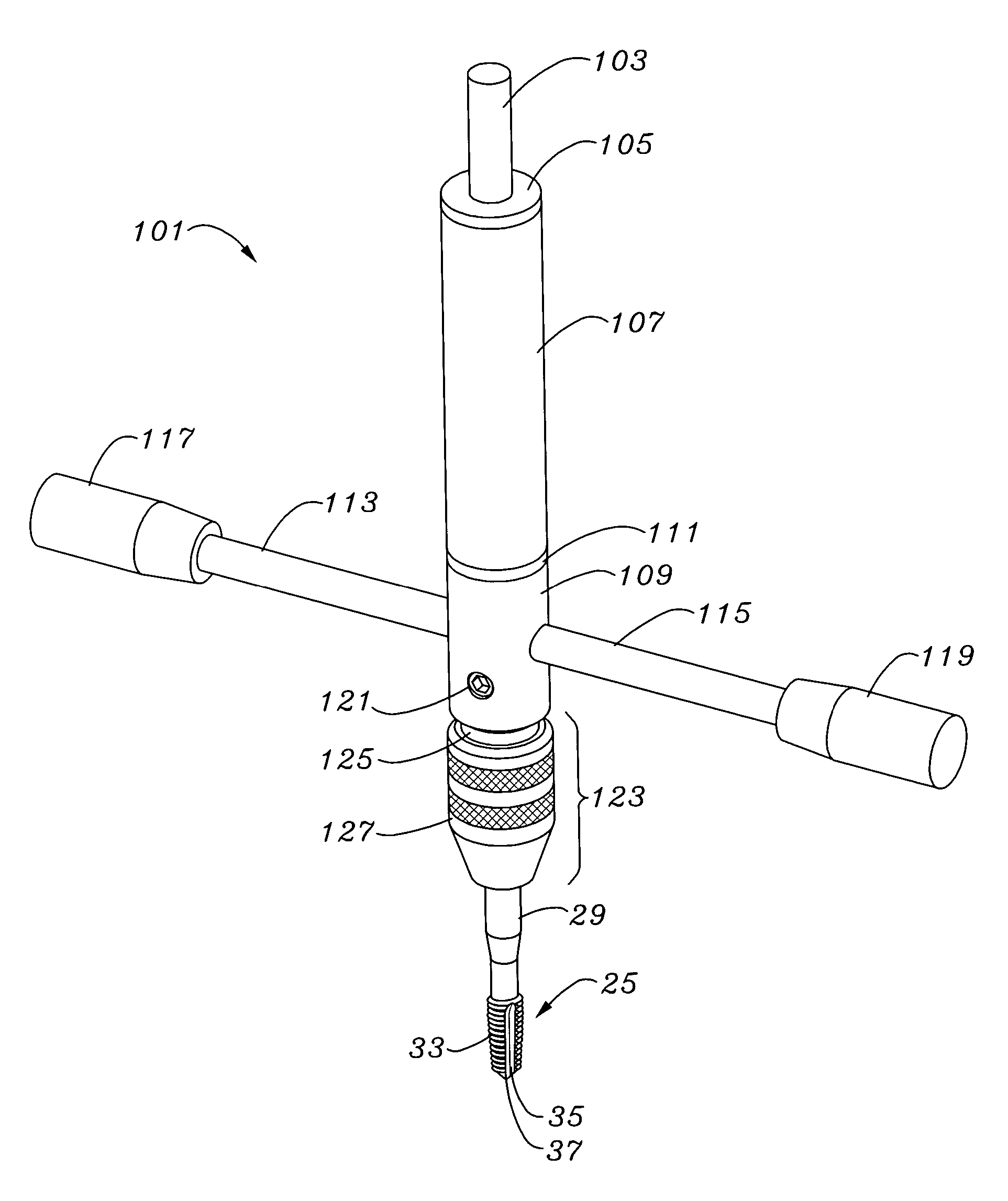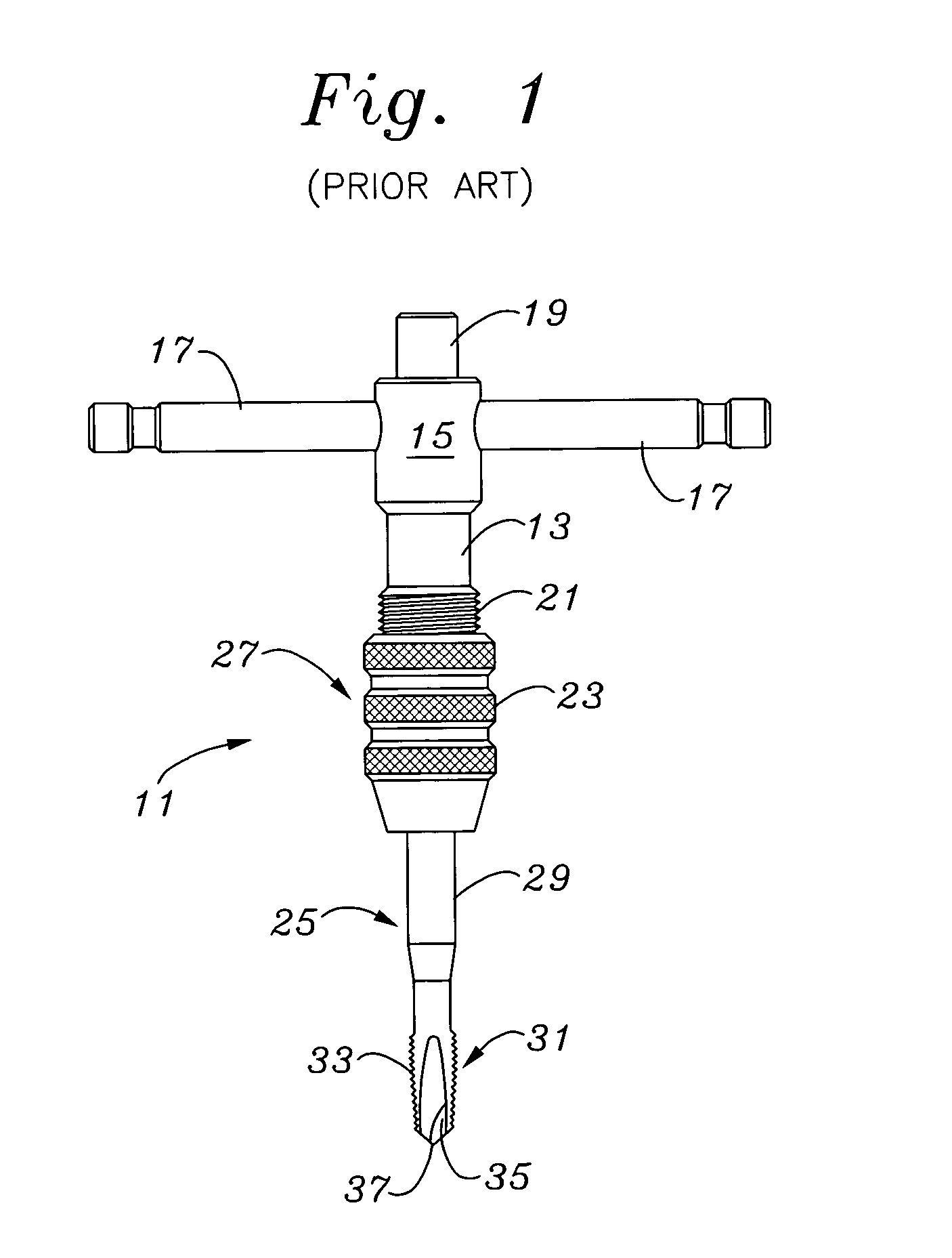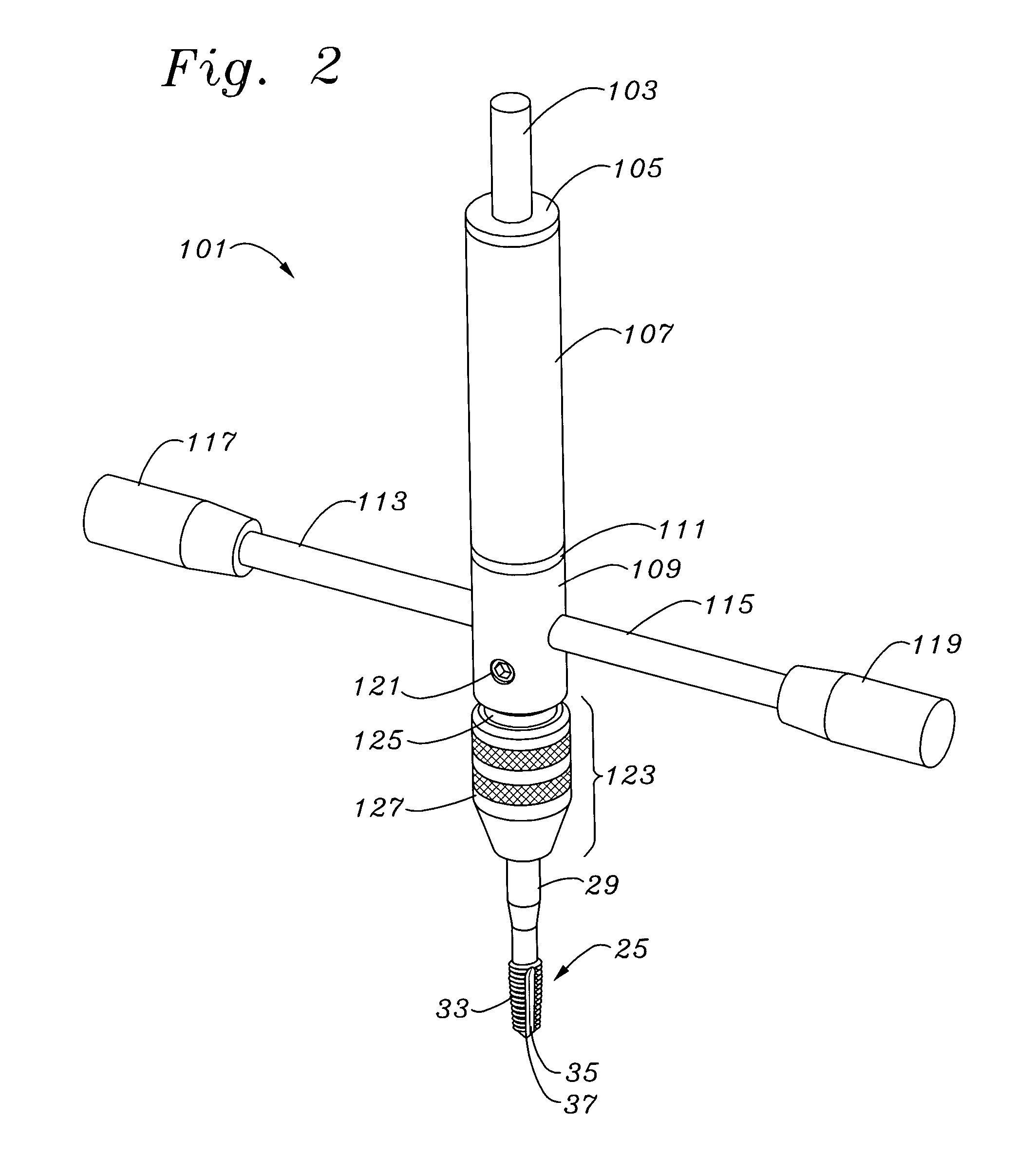Tapping tool for use with drill press
a drill press and tapping tool technology, applied in the direction of drilling tools, drilling/drilling apparatus, thread cutting machines, etc., can solve the problems of excessive work space requirements, lack of ease of use, and high cost, and achieve the effects of convenient use, greater flexibility, and greater incidence of us
- Summary
- Abstract
- Description
- Claims
- Application Information
AI Technical Summary
Benefits of technology
Problems solved by technology
Method used
Image
Examples
Embodiment Construction
[0031]The description and operation of the invention will be best described with reference to prior art FIG. 1, which is a perspective view of a typical conventional hand tapper 11. Conventional tapper 11 has a main body 13 having an upper fitting 15 supporting a pair of side extending turning arms 17. Conventional tapper 11 has an upper nib 19 which may be used for support. Below the main body 13 is a threaded section 21 which may, with manually turned collar 23, be included as a chuck for holding a tap 25 in a conventional manner. Tap 25 has an upper end (not shown) designed to fit within a typical tap chuck and may vary in its specific shape, generally so long as it can be engaged by a chuck type of securing mechanism. Within or at the threaded section 21 and the manually turned collar 23 are other mechanism portions which make up the tap chuck which is shown by an arrow and designated with the numeral 27.
[0032]Tap 25 has a shaft 29 and a cutting head 31 typically having several ...
PUM
| Property | Measurement | Unit |
|---|---|---|
| force | aaaaa | aaaaa |
| length | aaaaa | aaaaa |
| force bias | aaaaa | aaaaa |
Abstract
Description
Claims
Application Information
 Login to View More
Login to View More - R&D
- Intellectual Property
- Life Sciences
- Materials
- Tech Scout
- Unparalleled Data Quality
- Higher Quality Content
- 60% Fewer Hallucinations
Browse by: Latest US Patents, China's latest patents, Technical Efficacy Thesaurus, Application Domain, Technology Topic, Popular Technical Reports.
© 2025 PatSnap. All rights reserved.Legal|Privacy policy|Modern Slavery Act Transparency Statement|Sitemap|About US| Contact US: help@patsnap.com



